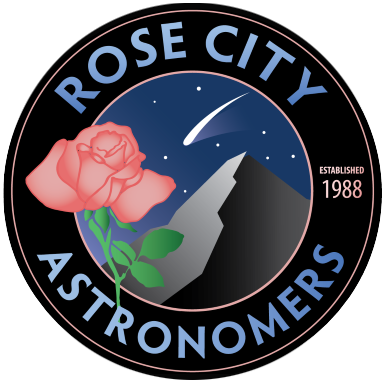Telescopes: Choosing Binoculars and Telescopes
/If you are interested in buying a telescope, research before you buy. RCA Members can borrow a scope from the Library.
A rule of thumb: if a telescope makes claims about having "450 power!" (450X) or more, don't buy it. There are lots of cheap instruments readily available on the market -- in local department stores or local discount stores -- that do not perform very well for astronomical use. If a telescope costs less than $300, it falls within this category and should be avoided at all costs. In fact, a decent pair of binoculars in the $150-200 range will give you much more viewing pleasure and fewer headaches than these mass-produced thingamabobs.
There are several articles and booklets in the RCA Member Library that provide information on choosing a telescope and appropriate accessories. Also, talk to other club members. The variety of instruments RCA members have range from binoculars to large reflectors, from refractors to Schmidt-Cassegrains. Each instrument has its advantages and disadvantages, so it is important that you determine your needs in order to match them up with the equipment that fits them the closest. The time, money, and headaches this research can save you are endless!
Binoculars
These are perhaps the most overlooked type of "telescope". A good pair of binoculars is a cost-effective way of introducing yourself to the night sky. They are especially useful in light polluted areas such as suburban or city locations. Many books have been written detailing the different types of objects easily viewed by most binoculars. In fact, over 50 of the Messier objects can be viewed with a pair of 10x50 binoculars. To be effective, binoculars should be at least 7x50, with 10x50 being a good starting pair. The "7" and "10" refer to power while the "50" refers to the diameter (in millimeters) of the lens. Binoculars with a diameter of less than 50 are not suitable for astronomy because they simply cannot gather enough light to be effective.
Reflectors
Also called "Newtonian telescopes", these are by far the most common telescope today and are excellent entry level as well as advanced telescopes. A common and very popular telescope of this type is also called a Dobsonian, which refers to a Newtonian or reflecting telescope on a low-tech mount developed by a famous amateur astronomer named John Dobson, hence The Dobsonian.
Reflecting telescopes are characterized by a long tube with a mirror at the bottom end and the eyepiece at the top. Small telescopes start out with a mirror diameter of 4.5 inches and go all the way up to 40 inches in diameter. A good starting telescope has a 8" diameter mirror and will give countless hours of enjoyment viewing the night sky. While smaller diameters will still allow you to view many of the same objects, an 8" or larger telescope will give you much more detail. These type of telescopes are manual in nature, with the operator having to physically move the telescope to point at an object. Unless the scope is mounted on an equatorial mount, this type of scope is not able to "track" a star so that it stays within the field of view at all times. An 8" Dob costs around $400-500, but an 8” reflecting telescope mounted on an equatorial mount can run as high as $1,000. The major benefits of these scopes is that they are easy to set up and operate and you get more aperture for the money. The biggest disadvantage is that they take up more room to transport so aren’t as portable in the larger sizes as other types of scope.
Schmidt Cassegrains
Commonly referred to as SCTs, these telescopes are "stubby" versions of the reflecting telescopes in that they fold the light twice from the time it hits the main mirror to the time the light exits at the eyepiece.
They are normally mounted on either fork-mounts or German equatorial mounts, which allow the telescope to be oriented in such a way that it is in the same "plane" as the night sky. These types of telescopes are normally equipped with a clock drive, giving the ability to track an object for hours at a time. Their advantages are that they are also capable of doing long-exposure photography and they are more portable than their Dobsonian counterparts for sizes greater than 8" in diameter. It is important to note, however, that they offer no better viewing than the same size Dobsonian telescopes. They just come with more bells and whistles. An 8" SCT costs between $1,200 and $3,000, depending on the sophistication of the computer and tracking hardware.
Refractors
Refractors are your "typical" telescopes in that this is what most people picture when thinking of a telescope. These use lenses to refract and focus the light instead of mirrors which are used by both Dobs and SCTs.
Refractors will give sharper views than their SCT or Dob counterparts at smaller sizes, making them more valuable for planetary viewing where crisp detail is more important. They can be mounted on German equatorial mounts (allowing the telescope to track stars) or alt-azimuth mounts. An entry level 4" refractor without tracking hardware will cost around $1,000, but can go upwards of $2,000 to $3,000 depending upon the quality of the lenses, mount, and tracking hardware.
Note: Drawings are not to scale. Dotted lines represent the path of light from when it enters the scope to where it exits at the eyepiece.
